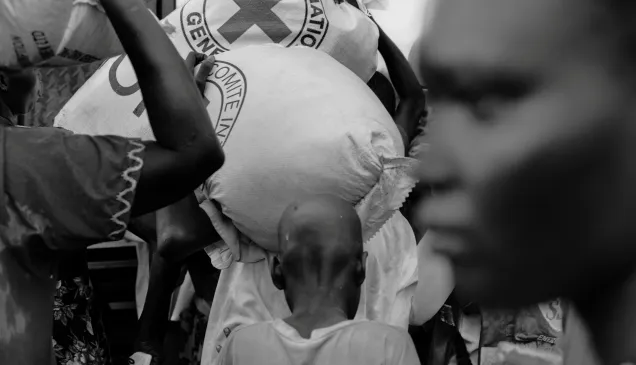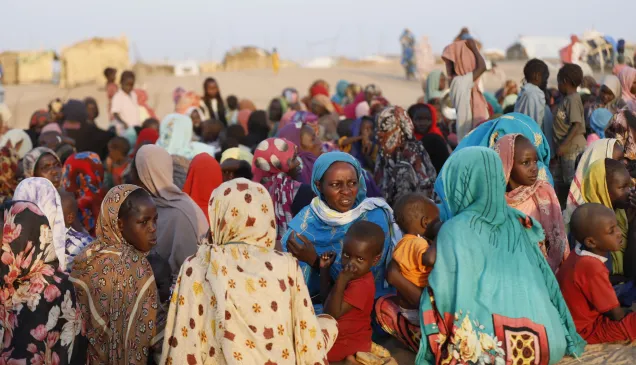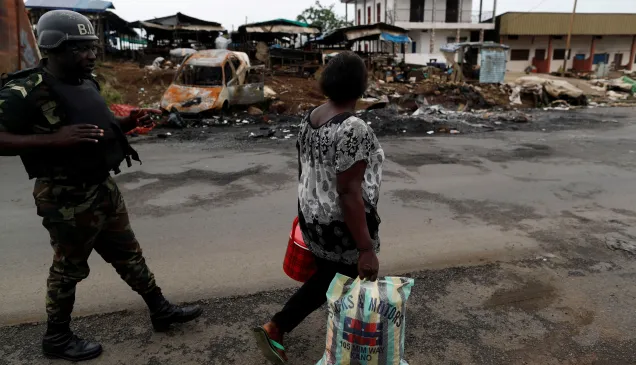Iraq’s perfect storm – a climate and environmental crisis amid the scars of war

As the world builds up to the COP26 summit in the UK, it is important that communities affected by conflict are not overlooked by climate action. In our latest piece exploring the link between climate change, the environment and conflict, we focus on some of the issues facing people in southern Iraq.
What images come to mind when you think of war in Iraq? A city razed to the ground. A family in mourning. Soldiers patrolling streets.
What about scores of dead palm trees? Or a barren marshland? Perhaps not what you would immediately associate with war.
Yet they are indicative of the ruinous damage that conflict has inflicted upon the environment in southern Iraq.
“War can weaken the environment and upturn lives long after the guns have fallen silent,” said Igor Malgrati, ICRC’s regional water and habitat advisor.
“In southern Iraq, you have an environment that has been damaged by years of conflict, poor environmental management and weak governance. When you add climate change into the mix, you have the perfect storm.”
A scarred landscape
The Iraqi marshlands are a wetland with a unique ecosystem at the junction of the Euphrates and Tigris rivers.
In the early 1990s, these marshlands were intentionally dried up as a means of retaliation against a population considered to be rebellious.
By 2001, an estimated 90 per cent of the marshlands had disappeared (UNEP), leading to a loss of biodiversity and large-scale displacement.
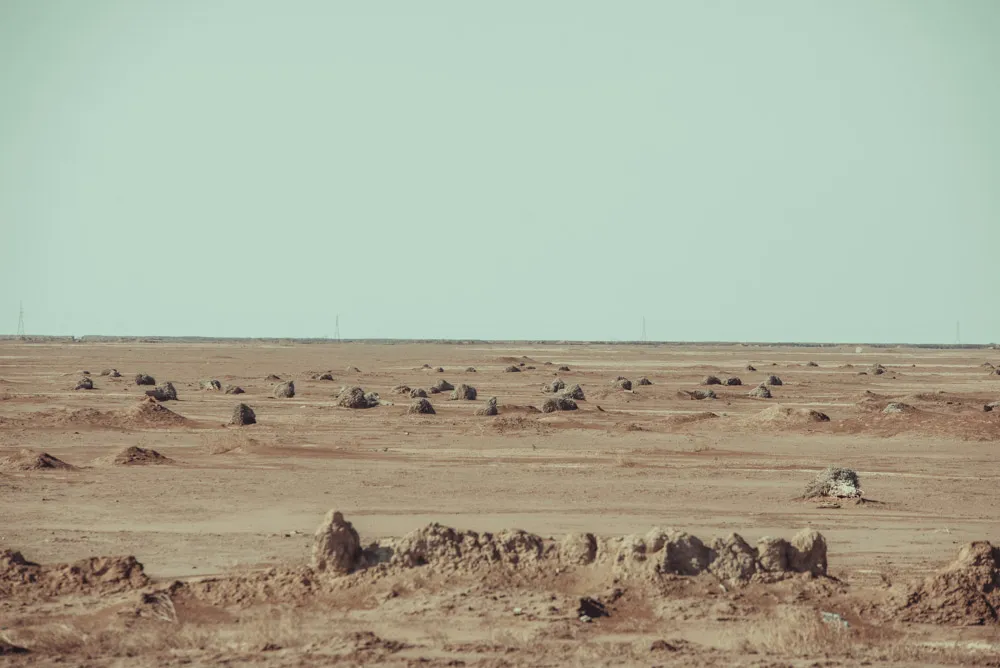
If you go back even further to the Iran-Iraq war of the 1980s, iconic date palms were cut down for military purposes in places like Fao, south of Basra.
“There were more than 30 million palms before the Iran-Iraq war, today there’s less than half that number,” said Adel Al-Attar, an ICRC water and habitat advisor, from Basra.
“Conflict, neglect, soil salinity, there are several reasons that have contributed towards their loss. It is deeply upsetting. The whole atmosphere has changed since we lost the palms.
“They aren’t only about fruit. They give shade for certain crops. The leaves are used to make furniture like chairs and beds. No palms mean no business. So people have left the land and moved to the cities to find jobs.”
The loss of palms and the drying of the marshlands are visible reminders of the direct damage that war has inflicted upon the environment in southern Iraq.
Less visible, but arguably more detrimental, are the indirect consequences of war – whether in Iraq or anywhere else.
For example, conflict will often weaken a government’s ability to manage natural resources, the environment and infrastructure.
Remnants of war, such as unexploded weapons or anti-personnel mines, can render land unusable and harm wildlife, while camps for people uprooted by conflict place additional pressure on the surrounding environment.
Enter climate change
Average temperatures in Iraq have risen by at least 0.7C over the last century, while extreme heat is becoming more frequent. Rainfall is on a slight downward trend in the south-east of the country.
The mean annual temperature is projected to rise by 2C by 2050, while the mean annual rainfall is projected to decrease by 9 per cent (World Bank Group).
“I’ve lived in Basra all my life,” said Al-Attar. “As a boy, the summer temperature never went much beyond 40C in summer. Today, it can surpass 50C.”
Sand or dust storms have also increased dramatically in frequency, in large part due to soil degradation.
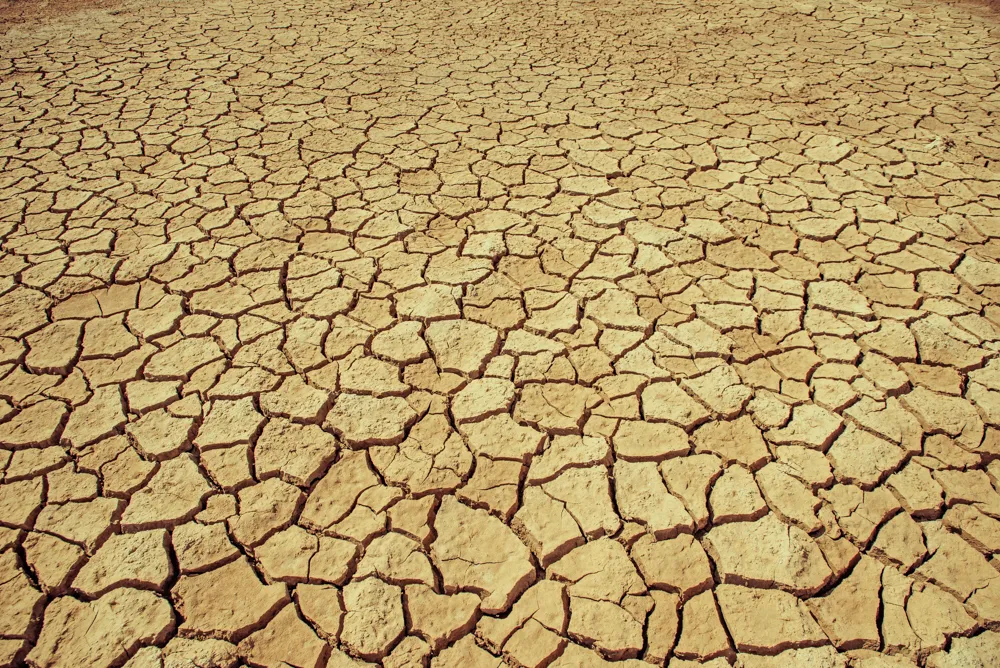
Between 1951-1990, there were an average of 24 days per year with dust storms in Iraq, compared to 122 in 2013 (UN). Again, projections suggest they are likely to increase.
“When there’s not enough rain or vegetation, the upper layers of earth become less compact, meaning the chance of dust or sandstorms increases,” explained Al-Attar.
“These weather events contribute to desertification. Fertile soil is turning into desert.”
Historically fertile areas in southern Iraq are disappearing, according to local authorities. In Fao, arable land has decreased from 7.5 sq km to 3.75 sq km, while in Thi Qar it has dropped from 100 sq km to just 12.5 sq km.
Desertification in the south has decimated the agricultural sector, which used to employ a sizeable part of the population.
When people are unable to depend on the land for their livelihoods, they migrate to urban areas like Basra or Najaf in the search for jobs.
As an example, the population of the port town of Fao has decreased from 400,000 to 50,000 people in four decades as people move to the larger cities.
“The future is emigration,” said Al-Attar. “It hurts when you see the younger generation leaving rural areas to go work in unskilled labor jobs in urban areas or in the oil fields.
“There aren’t enough jobs for them in these sectors. Unemployment is high, as are tensions, which doesn’t bode well for recovery and stability.”
Too much salt
Another major issue that weakens the environment is soil and water salinity, which has long been a widespread problem in Iraq. But in the south, the situation is becoming worse for a number of reasons.
More than 50 per cent of the water used in Iraq originates in Turkey, Syria and Iran. Regional and national water management practices have resulted in less water reaching southern Iraq in the Tigris and Euphrates rivers.
Coupled with this, the rivers pass through one of the driest areas in the region. Evaporation, while not the main factor, plays a role in increasing salinity.
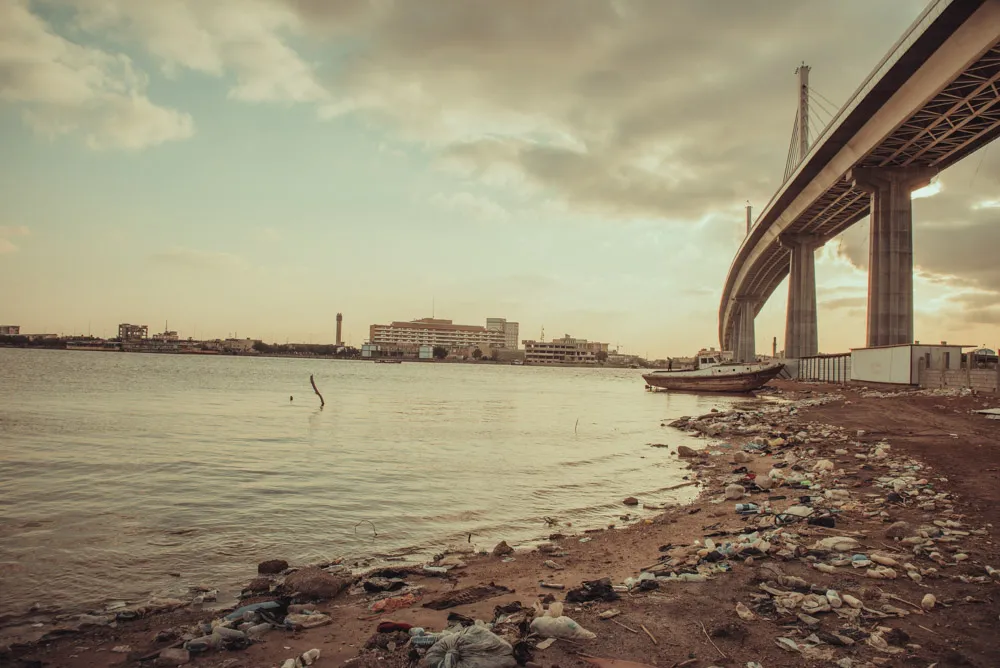
When the water levels of these rivers drop, seawater travels further up the Shatt Al Arab estuary and into irrigation canals used for farming and livestock.
“Water and soil salinity are bad for crops, bad for animals, bad for people,” said Malgrati.
“When you add this problem to the high levels of other pollutants that are present, then it’s a real danger for public health.”
In 2018, more than 100,000 people in the Basra governorate were hospitalized with symptoms relating to poor water quality (Human Rights Watch).
Rising temperatures, droughts, desertification, soil salinisation and landmines.
Life as a farmer in south-east Iraq is increasingly difficult. @ICRC_IQ pic.twitter.com/yMYCi3jw2M— ICRC UK & Ireland (@ICRC_uk) March 19, 2021
A call for support
The ICRC spent more than a decade working in southern Iraq helping people access safe water, among other activities.
Today, its work is focused on northern parts of the country, which have witnessed greater levels of conflict in recent years, but the ICRC continues to support the Iraqi Red Crescent in southern Iraq.
Last year the Iraqi Red Crescent Society started a programme that will install eight reverse osmosis water treatment units, which are solar powered, helping around 20,000 people to access drinking water. The ICRC is providing financial and technical support.
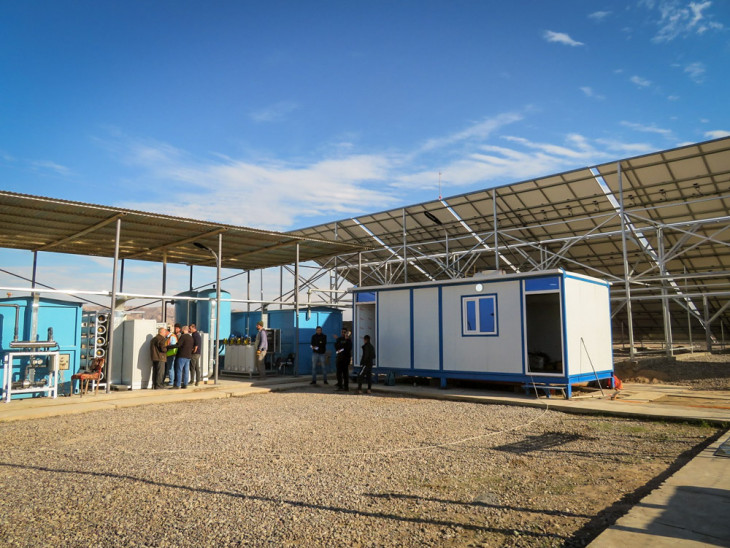
Reverse osmosis water treatment units help tackle water salinity
“These units remove the salinity from the water so people don’t have to buy drinking water,” explained Al-Attar.
“It’s an expensive process and capacity is limited, but water is in short supply so it’s necessary.”

The units are solar-powered and should help around 20,000 people get access to clean water
Helping communities worldwide to adapt to climate change is crucial. However, currently the bulk of climate finance supports efforts to reduce carbon emissions.
“Reducing greenhouse gas emissions is vital, but these efforts must be complemented by helping communities to adapt to a changing climate and environment so they can cope with current and future risks,” said Catherine-Lune Grayson, ICRC’s policy adviser on climate change and conflict.
“For now, despite being among the most vulnerable to the effects of climate change, countries enduring conflict are among the most neglected by climate finance, and in particular, finance for adaptation. This needs to change.”

